
Argyresthia pruniella, the cherry fruit moth or cherry blossom tineid, is a moth from the family Yponomeutidae, the ermine moths.

Scythropia crataegella, the hawthorn moth, is a species of moth in the monotypic genus Scythropia. It is found in western Eurasia.

Argyresthia albistria is a moth of the family Yponomeutidae. It is found in most of Europe.
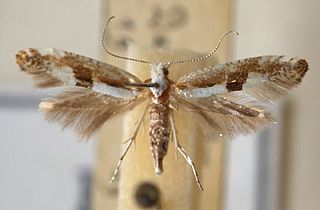
Argyresthia bonnetella is a moth of the family Yponomeutidae. It is found in Europe. The wingspan is 9–11 mm. The head is white. Forewings are shining ochreous-whitish, usually strigulated and sometimes discally suffused with ferruginous brown; a suffused ferruginous -brown median longitudinal streak from base to before middle; a curved dark ferruginous- brown fascia from middle of dorsum to 4/5 of costa, sometimes obsolete except on dorsum. Hindwings are grey. The larva is yellow-green; head and plate of 2 brown.
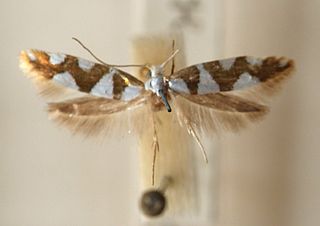
Argyresthia brockeella is a moth of the family Yponomeutidae. It is found in Europe, east Siberia and Japan. The wingspan is 9–12 mm. The head and thorax are white. Forewings are deep coppery-golden; a spot on base of dorsum, a fascia at 1/3, three posterior semioval costal spots and a larger tornal spot shining white; sometimes the fascia is connected with adjacent costal and dorsal spots. Hindwings are grey. The larva is pinkish-brown; head brown; plate of 2 partly blackish-edged.
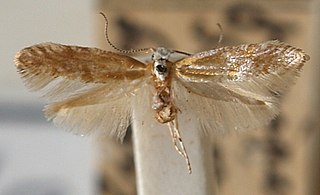
Argyresthia dilectella is a moth of the family Yponomeutidae. It is found in Northern Europe and Central Europe.

Argyresthia goedartella, the bronze alder moth, is a species of moth of the family Argyresthiidae.

Argyresthia semitestacella is a moth of the family Yponomeutidae. It is found in Europe.

Argyresthia pygmaeella is a moth of the family Yponomeutidae. The species was first described by Michael Denis and Ignaz Schiffermüller in 1775 from a specimen found near Vienna, Austria

Argyresthia spinosella is a moth of the family Yponomeutidae. It is found in Europe and Anatolia.

Argyresthia trifasciata, the juniper ermine moth, is a moth of the family Yponomeutidae. It is found in great parts of Europe, but originates from the Alps. The forewings are shiny golden-brown with 3 silver-white transverse bands The moth flies from May to September. .

Elachista atricomella is a moth of the family Elachistidae that is found in Europe.

Argyresthia laevigatella is a moth of the family Yponomeutidae. It is found in Europe and Japan.

Argyresthia conjugella, the apple fruit moth, is a moth of the family Yponomeutidae. It is found in Europe, Siberia, Central Asia, Japan, and North America.
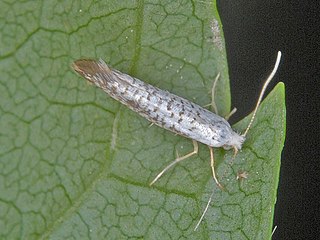
Argyresthia retinella is a species of moth of the family Yponomeutidae.

Paraswammerdamia lutarea is a moth of the family Yponomeutidae. It is found in Europe.
Argyresthia arceuthina is a moth of the family Yponomeutidae. It is found in Europe.

Argyresthia glaucinella is a moth of the family Yponomeutidae. It is found in Europe.
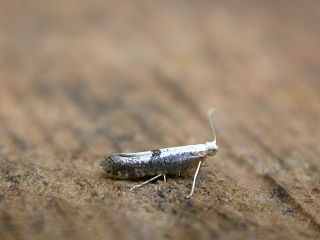
Argyresthia semifusca is a moth of the family Yponomeutidae. It is found in Europe.
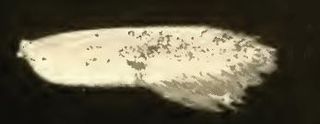
Argyresthia rileiella is a moth of the family Yponomeutidae. It is found in North America, including Washington, D.C.



















